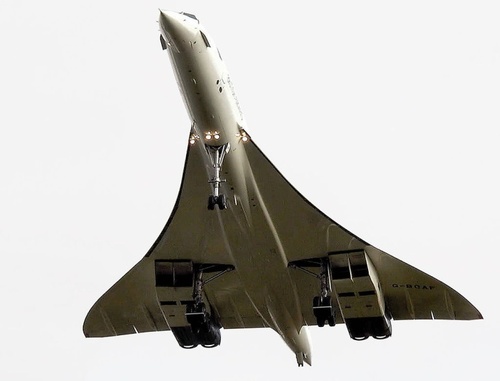

Twenty years since the end of the Concorde supersonic aircraft.
Last commercial flight by Air France was on 30th May 2003.
Why did the Concorde supersonic airliner die?
The ill-fated design of the happy years before the oil crisis doomed the beautiful supersonic Concordes, with their remarkably low weight-to-airspeed ratio and high fuel consumption, to inevitable extinction.
For almost a third of the last century, supersonic air transport was a reality, but twenty years ago it came to an end.
The history of the iconic Concorde supersonic machine began to be written at the turn of the 1950s and 1960s. In 1959, the British Commission for Supersonic Transport recommended the development of a supersonic transport aircraft and estimated that in 1970 the world demand for these machines would reach up to 500 units.

The first prototype left the factory in Toulouse, France, in December 1967, and in March 1969 Concorde took off from the ground for the first time. However, it did not come into active use until seven years later.
Concorde managed to fly across the Atlantic in about three hours.
The still valid record was set in February 1996, when the plane took 2 hours and 53 minutes in the direction of JFK - London.
In August 1995, he made the fastest flight around the world, which took him 31 hours, 27 minutes and 49 seconds (including all stopovers).
Even today, this route takes six to seven hours for standard airplanes. Thanks to the five-hour time difference between London and New York, the three-hour journey meant passengers arrived two hours "earlier" than their departure time. Because of the noise, especially the so-called sonic boom, which occurs when the speed of sound is exceeded, the planes could fly at maximum speed only over the ocean. For example, the journey from Paris to Dakar took place at subsonic speed, and it flew supersonic over the Atlantic on the way from Dakar to Rio.
.png)
The aircraft was mainly used by wealthy passengers who could afford to pay a high price in exchange for the speed and luxurious services of the aircraft. For example, in 1997 the cost of a round trip ticket from New York to London was $7,995.
Futuristic, bold, filled with pride in what man has been able to create.
.png)
Concorde was undoubtedly a very special phenomenon. And he was one of the most prominent symbols of the technological optimism of the 1960s.
It flies five kilometers above normal airplanes. It flies at more than twice the speed.
.png)
Thanks for reading ..... and always HAPPY FLYING
Margaret
Source: newstream.cz
https://www.concordesst.com/fleet.html
